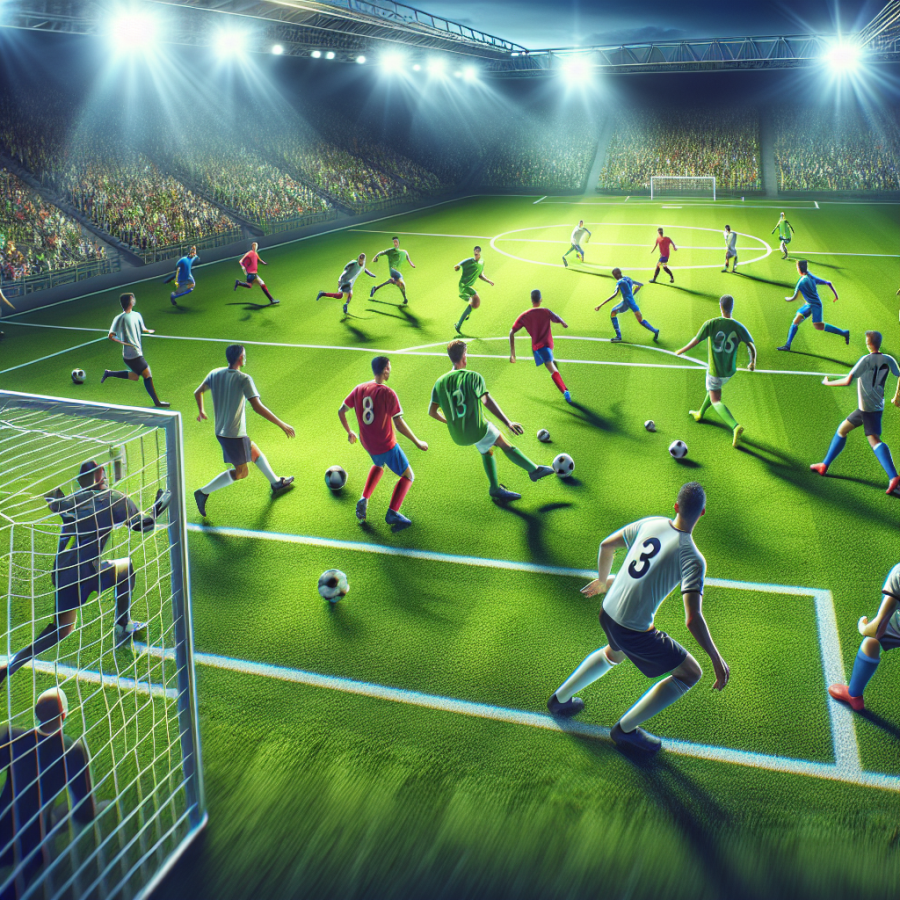Identifying Your Strengths: How Your Skills Determine Your Soccer Position
Soccer requires a diverse array of skills, many of which aren't necessarily exclusive to one position on the field. However, identifying your personal strengths can assist in determining which position you'll thrive in.
The first factor to consider when identifying your strengths is your stamina and physical condition. Midfielders, arguably the most physically demanding position, are often the players who cover the most ground during a match. They need to have excellent endurance to move between the defensive and attacking thirds of the field. Therefore, if you're the type of athlete who can maintain a high energy level for an extended period, this might be the ideal position for you.
Next, consider your short and long-distance passing skills. Center midfielders and playmakers are responsible for linking up the defensive and forward lines, requiring an ability to maintain possession and distribute the ball under pressure. The ability to execute accurate passes to your teammates—even with opponents bearing down on you—is an invaluable skill for these positions.
Ball-handling and dribbling are another set of key skills that directly impact your position on the field. Forwards and wingers typically possess great ball control, as they’re often tasked with taking on defenders in one-on-one scenarios. If your forte lies in weaving through defenders with the ball glued to your feet, the attacking positions may be ideal for you.
Evaluating your tactical understanding of the game is also essential. Defenders, particularly center backs, must understand positioning, marking, and anticipate the opponents’ offensive plays. The ability to "read" the game, see plays develop before they happen, and adjust accordingly is crucial for these positions.
Lastly, assess your shooting abilities and goal-scoring prowess. While every player may get an opportunity at some point to shoot on goal, forwards and attacking midfielders shoulder the majority of this responsibility. Consistency, power, and precision in your shooting ability is an indicator that you might excel in these roles.
Understanding your physical capabilities, skillset, and mental understanding of the game will help you pinpoint which soccer position suits you best. However, it's also important to remember that soccer is versatile and continually evolving. The best players are those who constantly work on improving all aspects of their game, no matter their primary position.
Read also:
The Anticipated Comeback: Will Soccer AM Make Its Return Soon?
Strategizing for Success: Understanding Different Soccer Positions and Their Requirements
Knowing which position to play in soccer often depends on a person’s skills, athletic ability, and understanding of the game. Every soccer position carries a unique set of demands, skills, and obligations. It requires a good grasp of each position to make an informed decision about where you fit best. It's all about strategizing for success.
The first position to explore is goalkeeper, often referred to as the last line of defense. This position needs someone with excellent hand-eye coordination, agility, and bravery. Goalkeepers need to make split-second decisions and must not be afraid to throw their body in front of oncoming balls. Plenty of tall players work well as goalkeepers due to their long reach, but this isn't a prerequisite. Reflexes, jumping and diving skills, and decision-making ability are more vital.
Defenders, or backs, usually consist of a center back, full backs, and wing backs. They work right in front of the goalkeeper and need to work cohesively to protect their area from opponents. A strong physical presence, agility, speed, and excellent tactical abilities are must-haves for defenders. These players must also be proficient in tackling and marking opponents, as well as heading the balls away from their goal.
Midfielders are the next set of players who operate in the field's middle. They're essentially a link between the defence and the attack. These multitaskers require a robust physical constitution, excellent passing skills, a well-rounded understanding of the game, and an ability to anticipate opponents' movements. Midfielders are divided into defensive, central, and attacking midfielders. The position dictates their specific roles and responsibilities.
Attackers or forwards are the heavy hitters whose primary aim is to score goals. Forwards should be adept at dribbling, shooting, and passing. Besides technical skills, attackers must possess physical speed, quick thinking faculties, and the ability to maintain control under pressure. Some variations of this position include strikers, center forwards, and wingers, each requiring some different skill sets.
If you love orchestrating plays or have a knack for creating scoring opportunities, you might do well as a playmaker. They often play in a central attacking midfield position, where their role is to create goal-scoring opportunities.
On the other hand, if you've got a robust physical presence, exceptional heading skills, and thrive in aerial duels, then the target man position could be your calling.




